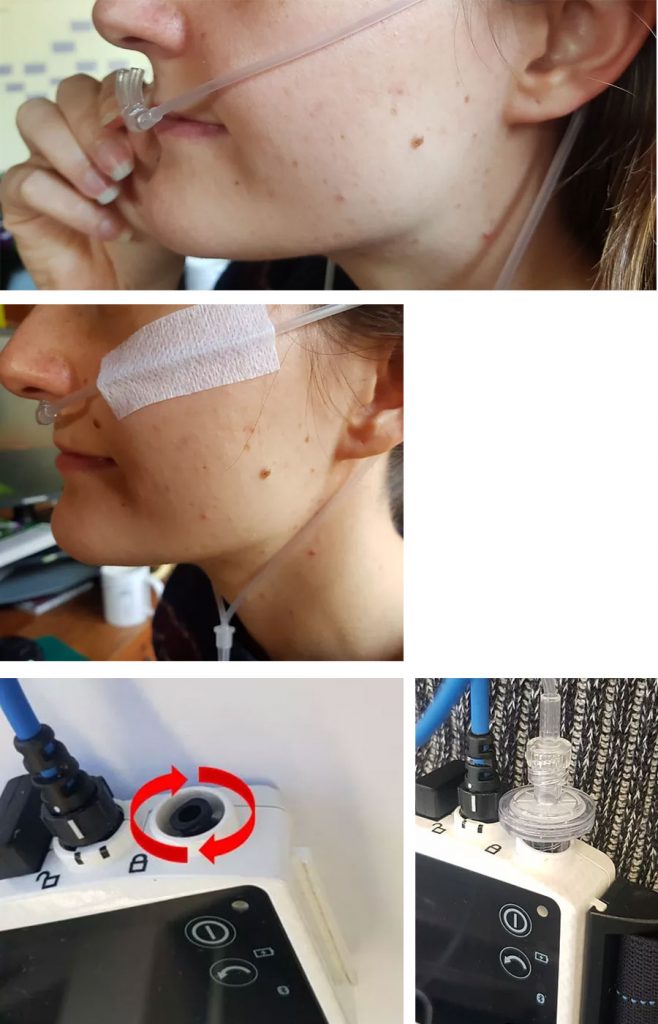We will now fit the nasal cannula, by which we will measure breathing overnight. This sensor can be uncomfortable initially, but we find that awareness of it quickly passes.
Take the cannula out of its packaging, then slide the slider all the way down to open the tubing wide.
Insert the prongs into the nostrils, ensuring that the curvature of the prongs faces down in the direction of your soft palate. Then draw the tubing across the cheeks and hook it over the ears.
Pull the slider back up so that the tubing comes together just under the chin – just like a hat strap.
Screw in the connector to its port on the top of the device.
Naturally, this is a particularly important component of the test, and if this signal is lost your physician may decide to repeat the test.
For this reason it is important to ensure that each prong is as far in the nostril as possible and secure the tubing down on each cheek with some of the tape provided.
Also, before turning your lights out, check again to make sure that the prongs are still in place.


